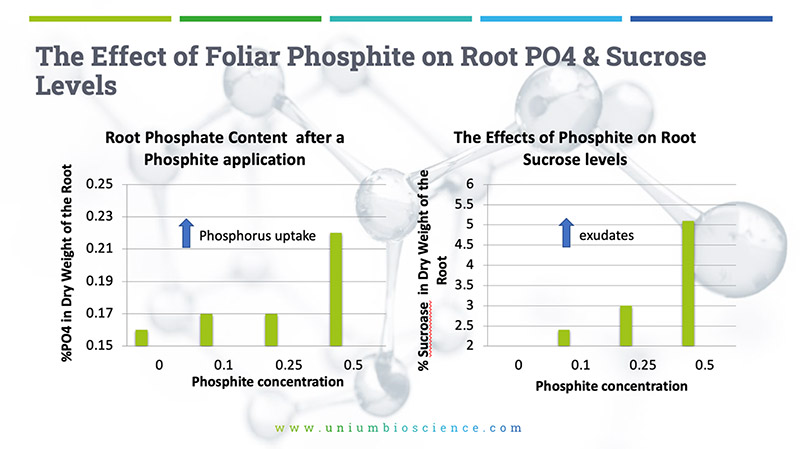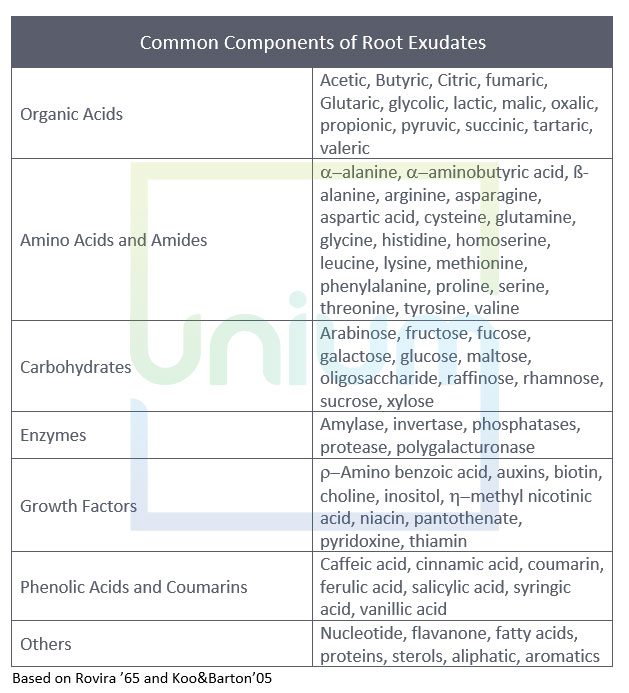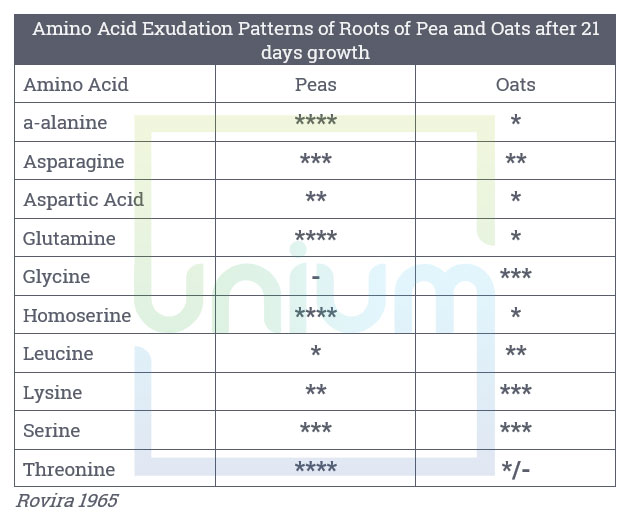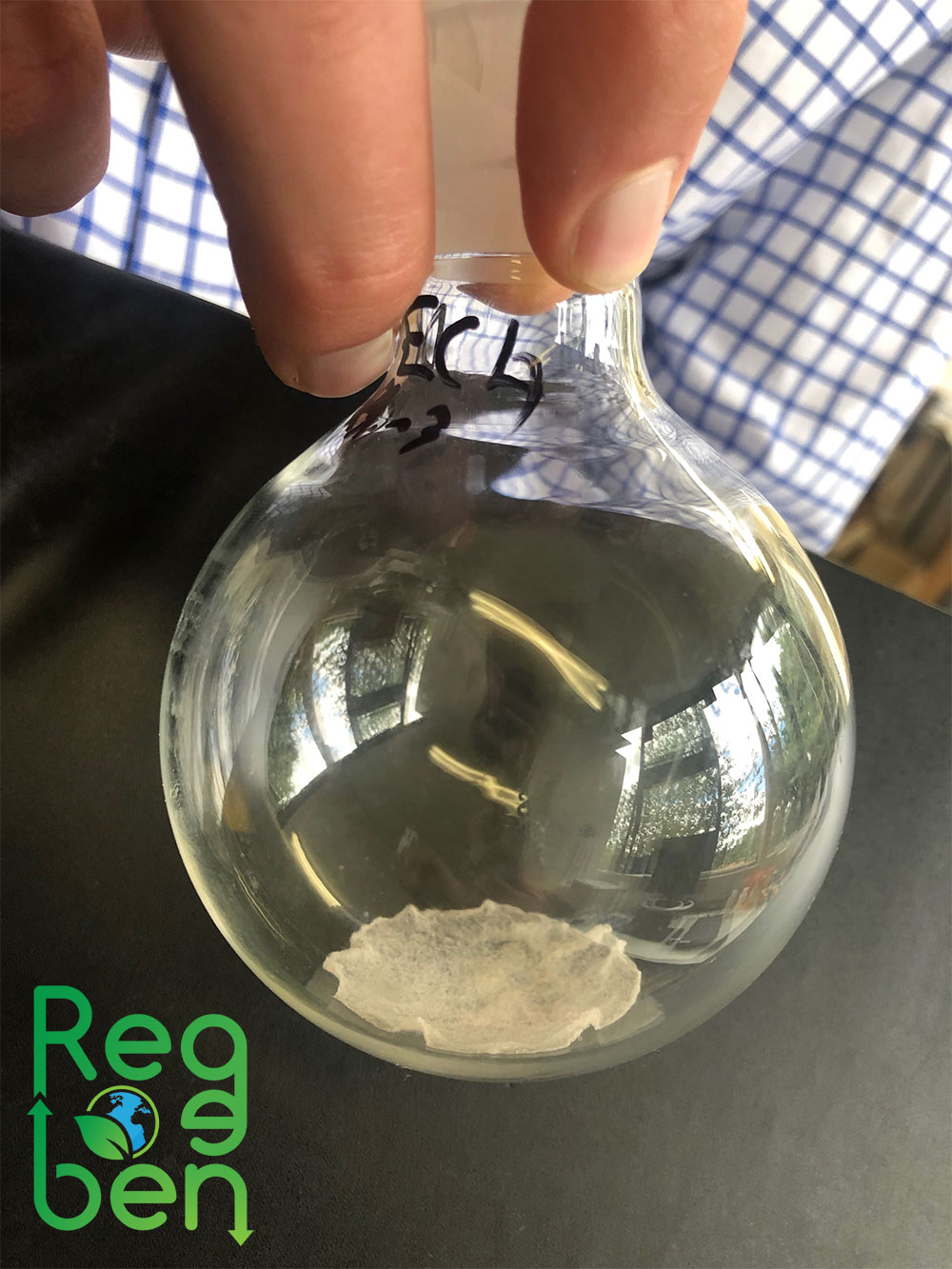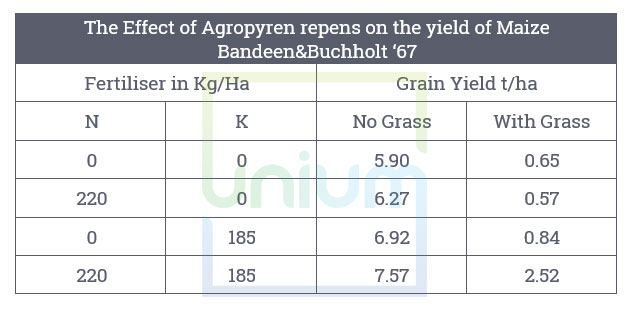The rhizosphere, the zone of soil immediately around a plant root, is home to a complex system of interactions. The gateway from the plant root to the rest of the surrounding soil, a variety of compounds are exuded into the rhizosphere for a wide range of reasons.
These exudates can provide an energy source to the microorganisms present in the rhizosphere. Alternatively, they can have a toxic effect on root pathogens or pests, or even an allelopathic effect on neighbouring plants and weeds.
They do this in several ways; shedding the cell wall, droplets from the root hair, by solubilising the mucigel sheath, release from the cortical cells when the plant perceives itself to be under attack or through root senescence.
Making sure the exudates are of the highest possible quality is essential in order to maximise the potential of this process. And this is where biostimulants can play a key role.
Applied at the right time and dose, they can maximise root efficiency and increase exudation.
Species Specific Exudates
Specific crops, or those within the same genus, often have their own unique exudates that will have a specific effect on soil pathogens or symbionts.
The table below highlights the difference in amino acid composition between peas and oats:
The dominate components are organic acids, sugars and amino acids. The organic acids tend to play a large role in solubilising mineral nutrients, whereas the carbohydrates are utilised as an energy source by soil micro-organisms. The non-proteinaceous amino acids enhance the mobility of plant micronutrients.
The perfect seed treatment would contain all three components to help the plant establish itself in a broad range of situations.
Composition of Exudates
The composition of exudates changes throughout the life of a crop and under different soil conditions.
For organic compounds, the root exudate content is typically low at the seedling stage and at its highest when the plant is flowering.
Amino acids are affected by different factors including genotype, the stage of growth, abiotic factors such as water and temperature and the biological make-up of the soil.
Organic acids such as citrate and malate are vital for solubilising and sequestering phosphorous. If a plant is deficient in phosphorous, this probably has the largest effect of all on root architecture, increasing root production and root hair formation.
For this reason, phosphite is a valuable biostimulant for growers to add their toolbox as it causes a transient phosphorus deficiency which in turn increases root biomass, laterals and exudation.
Applying a carbohydrate such as molasses can similarly activate a phosphorus deficiency but instead of affecting primary root growth is boosts sugar accumulation.
Decreasing or increasing exudation
More is known about the composition of root exudates than the total quantity produced, although we have seen that large quantities can be produced in our previous article “Understanding the Root Zone”.
Photo Courtesy of Ben Taylor-Davies (Regen Ben) and Rothamsted Research.
Exudation can be decreased by nitrogen deficiency. It can be increased by:
- Increased shoot growth
- Phosphorus deficiency
- Water stress and low temperatures for short periods
- Micro-organisms
- Certain herbicides such as trifluralin.
Herbicides released through weed roots can target microbial groups that foster negative processes such as nutrient immobilisation, or support them as opportunistic pathogens. We know glyphosate increases nitrogen exudation, favouring pathogenic fungal colonisation. Some beneficials are increased with herbicide applications such as imazethapyrm although this is not currently authorised for use in the UK. The increase in beneficials probably occurs because the plant produces exudates after the herbicide application to reduce the phytotoxic stress from the product.
If a variety is naturally susceptible or resistant to a disease then this can also affect exudation. For example if cotton is infected with fusarium then sugar exudation is reduced. However, there is minimal effect on a resistant variety.
Self-preservation
Some crops protect themselves through exudation. Asparagus excretes a soluble carbohydrate which is toxic to stubby root nematodes. African marigold produces a polythiebyl which is toxic to nematodes and beans are known to reduce wireworm populations. Flax/linseed also excretes inorganic materials, e.g. prussic acid, to protect their roots.
Allelopathic effects (where one species can influence another) are generally seen at the seedling stage. This phenomenon can explain why small weed seedlings sometimes effect the emerging crop more than the inter-species competition for light and nutrients.
For example, couch grass releases substances that impact N and K uptake by other plants especially. maize. This allelopathic effect is not mitigated by a dressing of fertiliser at higher levels than the restriction. This trial highlights the close relationship between N and K:
It has been shown that root excretions in particular grasses can inhibit nitrification, the oxidation of ammonium ions to nitrite and further nitrate. So not only can grassweeds have twice the root biomass of the crop competing directly, but they can also exert other limitations via these exudations.
Following crops
Crops can also influence whatever crops follow on afterwards. Most people are aware of the positive effects of growing pulse crops as they leave residual N & P behind in the soil.
However certain crops will lock up soil nitrates on decomposition, for example, sorghum. Trials in the US showed wheat yield was 20% more after maize compared with when it followed sorghum over a 23-year period.
The explanation is that the sorghum has a very high sugar content in the crown root, approximately one thousand times more concentrated than the maize. This therefore locks up more nitrates as the soil microbiology feed on these sugars (and there may be a negative effect on soil structure from these sugars also). This is worth considering for game cover and cover cropping. In a rotation this can be mitigated with fertiliser or by growing a legume prior to the Sorghum.
Studies have shown that oats following sorghum after lucerne provided enough N for optimal growth, but if the lucerne was replaced with soya then the yields and soil nitrate levels were reduced by a third.
The biological associations can be very wide and varied and have multiple factors that can affect the range and populations. Within these relationships the symbiotic endophytes associations are very important.
Biologically fixed N offers more benefits than applied fertiliser. The ensuing rhizosphere acidification also promotes the increased solubilisation of phosphate. For legumes, the incorporated biomass after harvest often provides more available P from residue decomposition and solubilisation than is an equal amount of available P in the original soil form – hence pulses provide more than just N for the subsequent crop.
Often the rhizosphere can be one pH unit lower from biological fixation than from fertiliser application (nitrate and larger for ammonia fertilisers). This increase in acidification helps to solubilise calcium and phosphorus breaking down calcium phosphate in the soil to increase availability – we know dicots have a higher demand in general to monocots for P (but monocots do vary greatly from one species to the next).
Maize has a low Ca adsorption capacity and yields (biomass) poorly when rock phosphate is applied compared to TSP (approx. ¼), whereas millet biomass (with its high Ca adsorption rate) yields ¾ of the biomass when comparing rock phosphate application with the same level of TSP.
We know oilseed rape is capable of excreting higher levels of organic acids under low P conditions as well as increasing its root biomass (hair length), which not only solubilises phosphorus but also makes calcium available (oilseed rape requires relatively high levels compared with other crops). It is relatively more efficient than maize and cow peas.
So, we can see that in their natural environment, plants have a wonderful array of exudation mechanisms to cope with the ever changing environment. In modern agriculture we are able to support that in various ways – using the correct, well balanced seed treatments (Boost, Tigga, Voltek) with endophytic bacteria (TIROS) will help with establishment and throughout the life of the crop. In season applications of phosphite, in particular the more effective and crop-safe calcium phosphite form (Calfite, aCalsa), and other key metabolites also support this vital umbilical cord from the crop to the soil via the wonderful world of soil biology.
Below you can see how phosphites ~ arguably the best root biostimulant, increase the absorption of phosphorus to the plant and they encourage this by increasing the level of exudates produced by the plant to forge the link with biology, which will solubilise and sequester the phosphorus for the plant.
This is one of the key components of success regarding biologicals ~ the integration of biology and chemistry.
